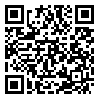BibTeX | RIS | EndNote | Medlars | ProCite | Reference Manager | RefWorks
Send citation to:
URL: http://rehabilitationj.uswr.ac.ir/article-1-1769-en.html
2- Surgical Care Research Center, Birjand University of Medical Sciences, Birjand, Iran. ,
Objective Family member caregivers of patients with spinal cord injuries experience varying degrees of burden because of the long process in the care of their patients. These conditions have different negative consequences for the family caregivers. One of the most important protective factors against the suffering of the caregivers is their knowledge about care giving process. Therefore, the aim of the present study was to evaluate the effect of educational intervention based on Orem self-care model on family caregivers' burden of patients with spinal cord injuries.
Materials & Methods This was a quasi-experimental study with pretest and posttest design and control group. It was conducted on patients with spinal cord injuries at South Khorasan Province. Research units purposefully selected and then were randomly allocated to experimental and control groups. Experimental group received educational intervention based on Orem self-care model for patients with spinal cord injuries consisted of eight 40-minute teaching sessions at the center. To measure the burden of caregivers, 22-item Zarit questionnaire was used with content validity index of 80% and Cronbach α of 0.79. The questionnaire was completed before and after the intervention in experimental and control groups. The results were analyzed by SPSS version 16 using descriptive (frequency, mean and standard deviation) and analytical (t-test, ANOVA and Pearson correlation coefficient) statistics.
Results Mean of burden in caregivers was not significantly different between the 2 groups before The intervention. But, we observed significant differences between the 2 groups after the intervention. The difference between mean of burden before (3.2±0.33) and after (3.11±0.66) the intervention was significant (P<0.05) which shows the positive impact of education. The results obtained with regard to the relationship between mean burden of caregivers and demographic variables indicate that there is a significant relationship between the burden of caregivers and their income, before and after intervention in 2 groups (P<0.05). Furthermore, burden score shows a significant positive association with the duration of caring the damaged patient. The longer the duration of caring, the higher would be the burden score (P<0.05, r=0.3). The burden score relates also with increasing age, both positively and significantly (P<0.05, r=0.3). There was no significant correlation between other variables and burden score (P>0.05).
Conclusion The results of this study suggest that education of family caregivers of patients with spinal cord injuries based on Orem self-care model can reduce their experienced burden resulted from chronic and long term caregiving involvement. Moreover, the financial situation and occupation of caregivers could be a positive relational factor in their burden. Therefore, we suggest that the family of caregivers be under support and supervision of social and therapeutic supportive organizations. Also, with regard to long-term care of these patients, some measures like caring the patient at home with support and backing of spinal-cord injury centers to reduce the pressure on the family of caregivers are recommended.
Received: 4/07/2015 | Accepted: 7/10/2015 | Published: 1/04/2016
| Rights and permissions | |
 |
This work is licensed under a Creative Commons Attribution-NonCommercial 4.0 International License. |






